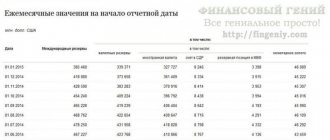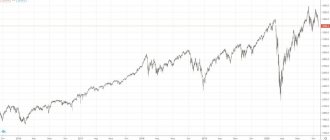Rating of countries in the world by level of foreign direct investment
Foreign direct investment (FDI) is a form of participation of foreign capital in the implementation of investment projects on the territory of the investment recipient state, which represents long-term capital investments of a foreign investor in manufacturing, trading and other commercial enterprises with the aim of making a profit.The methodology of the International Monetary Fund (IMF), which annually calculates the volume of foreign direct investment at the international level, states that foreign investments can be considered foreign direct investments if they imply the acquisition by a foreign investor of at least 10% of the share in the authorized capital of a commercial organization on the territory of the investment recipient state and allow the investor (or his representative) to exercise strategic influence on the invested enterprises, including partial or complete control over them. In practice, however, in some countries a 10% share in the share capital of the investee enterprise is considered insufficient to establish effective control over management or demonstrate the long-term interest of the investor. Thus, foreign direct investment in general must be large enough and long-term to allow the foreign investor to establish effective control over the management of the invested enterprise and ensure its long-term interest in the successful operation and development of this enterprise. At the same time, the long period of investment within the framework of FDI limits the ability of investors to quickly exit the market and thereby increases the interest of FDI importing countries in them. In many countries, the implementation of investment projects with the participation of foreign capital is regulated by law, and in the structure of the executive branch, as a rule, there is a government body responsible for the development and implementation of state policy in the field of investment.
The main incentive for the intensive development of the international investment process is the need for large businesses to increase their competitiveness at the international level by expanding activities in new markets, rationalizing production, reducing costs, diversifying risks and gaining access to resources and strategic assets in the economies of different countries. Currently, the main subjects of FDI are international companies and financial groups.
The basis for data on FDI in the economies of different countries is periodic releases of statistical reports from the series “Balance of Payments Statistics” of the International Monetary Fund, “World Development Indicators” of the World Bank, “World Investment Report” of the United Nations Conference on Trade and Development (UNCTAD), and also annual economic reports of national statistical institutes, data from which are accumulated by these international organizations.
Russia's position in the Doing Business ranking
In 2012, Russian President Vladimir Putin set a goal and task in his “May Decrees” for officials and the state to enter the top 20 countries in the Doing Business ranking by 2021. It was from this moment that Russia’s position in the Doing Business ranking began to grow from year to year. However, Russia never managed to get into the top 20 countries, so it took 35th place in 2021, 31st place in 2021, and 28th place in 2021. Below you can trace Russia’s position in the Doing Business ranking from 2006 to 2021 on the graph.
Next, I provide a detailed analysis of Russia’s position in the Doing Business rating according to the main rating indicators, also from 2006 to 2020. Russia achieved the greatest success for 2021 in the indicators “Connecting to power grids” and “Registration of property” - 7th and 12th places, respectively. The worst situation is with the “international trade” indicator, where Russia ranks only 99th as of 2021.
| Doing Business | 2006 | 2007 | 2008 | 2009 | 2010 | 2011 | 2012 | 2013 | 2014 | 2015 | 2016 | 2017 | 2018 | 2019 | 2020 |
| Position in the overall ranking | 79 | 96 | 106 | 120 | 116 | 124 | 120 | 112 | 92 | 62 | 51 | 35 | 35 | 31 | 28 |
| Registration of enterprises | — | 33 | 50 | 65 | 104 | 106 | 111 | 101 | 88 | 34 | 41 | 26 | 28 | 32 | 40 |
| Obtaining building permits | — | 163 | 177 | 180 | 182 | 179 | 178 | 178 | 178 | 156 | 119 | 115 | 115 | 48 | 26 |
| Electrical connection | — | — | — | — | — | 183 | 183 | 184 | 141 | 143 | 29 | 30 | 10 | 12 | 7 |
| Hiring labor | — | 87 | 101 | 101 | 109 | — | — | — | |||||||
| Property registration | — | 44 | 45 | 49 | 45 | 51 | 45 | 46 | 17 | 12 | 8 | 9 | 12 | 12 | 12 |
| Lending | — | 159 | 84 | 109 | 87 | 96 | 98 | 104 | 55 | 61 | 42 | 44 | 29 | 22 | 25 |
| Investor protection | — | 60 | 83 | 88 | 92 | 108 | 111 | 117 | 115 | 100 | 66 | 53 | 51 | 57 | 72 |
| Taxation | — | 98 | 130 | 134 | 103 | 107 | 105 | 64 | 56 | 49 | 47 | 45 | 52 | 53 | 58 |
| international trade | — | 143 | 155 | 161 | 162 | 166 | 160 | 162 | 157 | 155 | 138 | 140 | 100 | 99 | 99 |
| Enforcement of contracts | — | 25 | 19 | 18 | 18 | 19 | 13 | 11 | 10 | 14 | 5 | 12 | 18 | 18 | 21 |
| Liquidation of enterprises | — | 81 | 80 | 89 | 93 | 103 | — | — | |||||||
| Insolvency resolution | — | — | — | — | — | 60 | 60 | 53 | 55 | 65 | 51 | 51 | 54 | 55 | 57 |
Poland
Population: 38.0 million
GDP: $524.5 billion
GDP growth: 5.1%
The Polish economy is a socially oriented market economy.
The sixth largest economy in the European Union and the largest among former members of the Eastern Bloc and new members of the European Union.
As of 2021, the Polish economy has grown steadily over the past 28 years, which is a record figure in
Saudi Arabia
Population: 32.9 million
GDP: $683.8 billion
GDP growth: 2.2%
Saudi Arabia, with its colossal oil reserves, is the main state of the Organization of Petroleum Exporting Countries (OPEC).
Saudi Arabia's economy is based on the oil industry, which accounts for 45% of the country's gross domestic product.
75% of budget revenues and 90% of exports come from the export of petroleum products.
Costa Rica
Population: 4.9 million
GDP: $57.1 billion
GDP growth: 2.7%
Costa Rica's economy is based on tourism, agriculture and the manufacturing and export of electronics (microprocessors and medical devices).
Foreign investors are attracted by political stability, skilled labor, and tax incentives.
Negative factors
The investment attractiveness of the Russian Federation can still hardly be called exemplary. This is due to a number of serious problems that have existed in the state for a long time.
First of all, it should be said about the strange economic policy pursued by the relevant ministries of the Russian Government. Its roots should be sought in the 90s, when the state was handed over to the liberals. Their belief that the free market can fully regulate itself has completely failed. After V.V. came to power. Putin, the Russian Federation as a whole changed its course. At the same time, the economic bloc of the Russian Government is still formed by the old liberal cadres.
A serious problem that directly affects the investment attractiveness of the Russian Federation is the high level of corruption and bureaucracy. 2021 is marked by a serious and uncompromising fight against bribe-takers and corrupt officials. However, on this front the country is only at the beginning of a long journey.
Additionally, it should be said about the significant imperfections that are present in the federal and regional legislation regulating investment legal relations.
It is also impossible not to mention the insufficient level of business culture and low labor productivity. According to these indicators, the Russian Federation is seriously inferior to its Western foreign partners.
The essence of the phenomenon
The investment attractiveness of a country is an indicator characterizing the current political and economic situation in it as a whole, as well as its individual components. Among them are:
- investment climate;
- stability of the political system;
- the existing taxation system;
- regulatory framework;
- existing risks;
- structure and volume of the domestic market;
- degree of financial sovereignty;
- dynamics of the value of the national currency;
- development of infrastructure elements;
- availability of its own raw material base;
- other factors.
When considering the investment attractiveness of a country, it is also necessary to take into account the main macroeconomic indicators.
Development of investment attractiveness
To improve the situation in the country, the Ministry of Finance developed an innovative reform of the “model” budget. Regions will receive subsidies determined according to a special all-Russian standard with adjustments for regional specifics. For each region, the funding model will be compared with the actual budget. This model will make it possible to track in which region funds are used and spent inefficiently, and where to plan an increase in transfers from the regions.
The model was partially applied in 2017: approximately 20% of all subsidies were distributed according to the model principle. In 2018, already 30% of the budget was distributed in the format of model financing. The results are already there: more than half of the regions that were subsidized from the budget distributed budget subsidies irrationally, as a result of which funding was cut. The regions unfavorable in terms of risks included the Kaliningrad region, Chukotka, Ingushetia, Sevastopol and other regions.
Final ranking of the top 10 investment attractiveness of regions for 2018–2019. as follows.
| Region/Region | Rating 2021 | Rating 2021 | 2021 Index |
| Moscow | 1 | 2 | 283,6 |
| Republic of Tatarstan | 2 | 3 | 283,3 |
| Tyumen region | 3 | 1 | 282,6 |
| Kaluga region | 4 | 13 | 279,7 |
| Saint Petersburg | 5 | 4 | 276,6 |
| Tula region | 6 | 5 | 276,4 |
| Moscow region | 7 | 9 | 276,2 |
| Belgorod region | 8 | 11 | 275,4 |
| Leningrad region | 9 | 12 | 274,8 |
| Ulyanovsk region | 10 | 10 | 273,6 |
In June 2021, the Agency for Strategic Initiatives provided summarized data on the growing attractiveness of regions (see table). It was noted that positive dynamics of investment conditions were noted in all regions. In many regions, in recent years, specialized structures have been created that improve the conditions for the development of the region. These are funds for the development of industrial and investment activities, whose task is to provide loans and subsidies to finance the costs of construction and construction of facilities, capital construction, infrastructure development and support for innovative start-ups. The Chuvash Republic is recognized as one of the most progressive regions in this direction.
India
Population: 1.3 billion
GDP: $2.6 trillion
GDP growth: 7.0%
Over the past two decades, India's economy has experienced steady growth, however, when comparing different social groups, geographical regions, and rural and urban areas, economic growth has not been uniform.
In recent times, India, due to the presence of a large number of English-speaking professionals, has become an outsourcing destination for many multinational corporations and a popular destination for “medical tourism”.
India has also emerged as a significant exporter of software and financial and technology services.
Luxembourg
Population: 599,400
GDP: $62.4 billion
GDP growth: 2.6%
Luxembourg is one of the richest countries in Europe with the highest standard of living. Luxembourg City is home to many EU organizations.
Thanks to favorable conditions and an offshore zone, about 1,000 investment funds and more than 200 banks are located in the capital - more than in any other city in the world.











